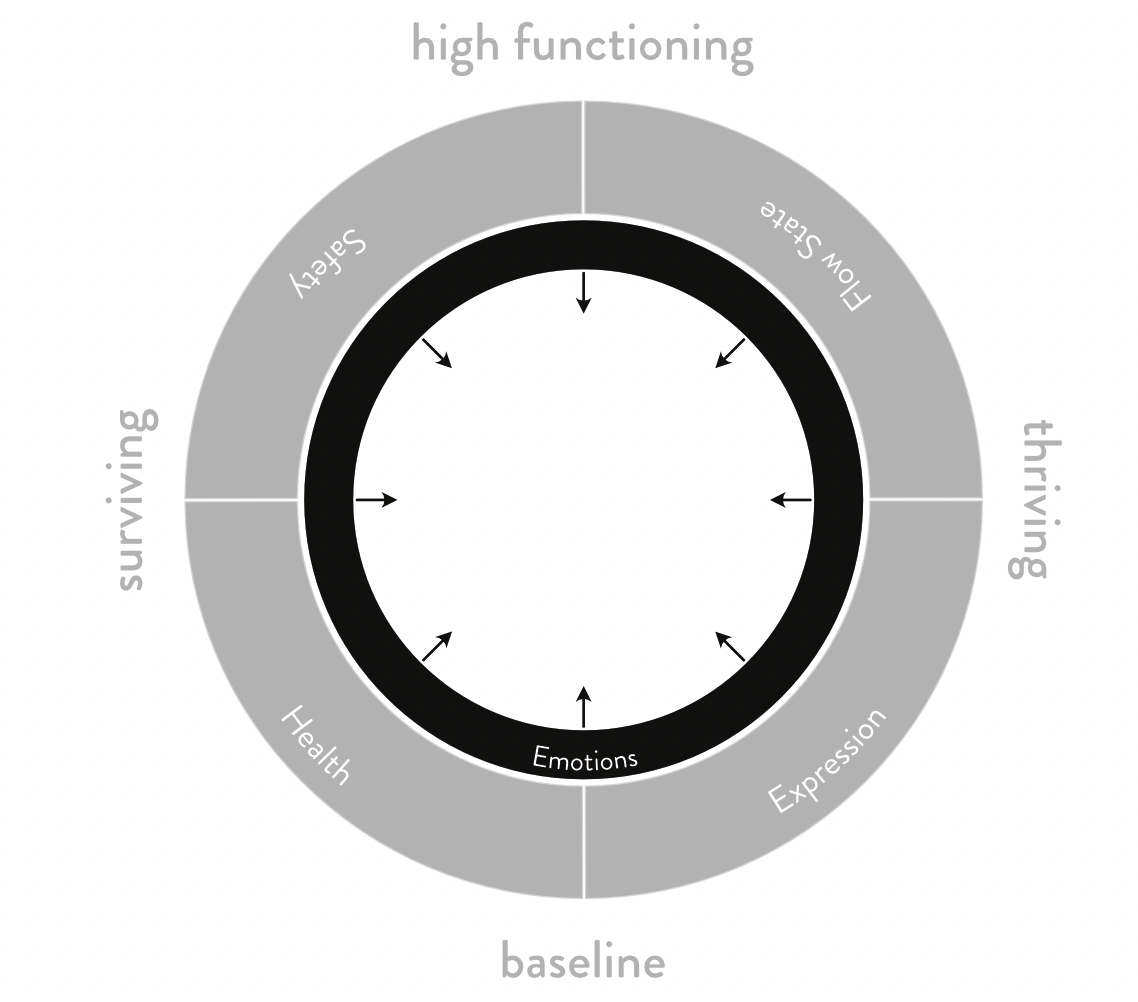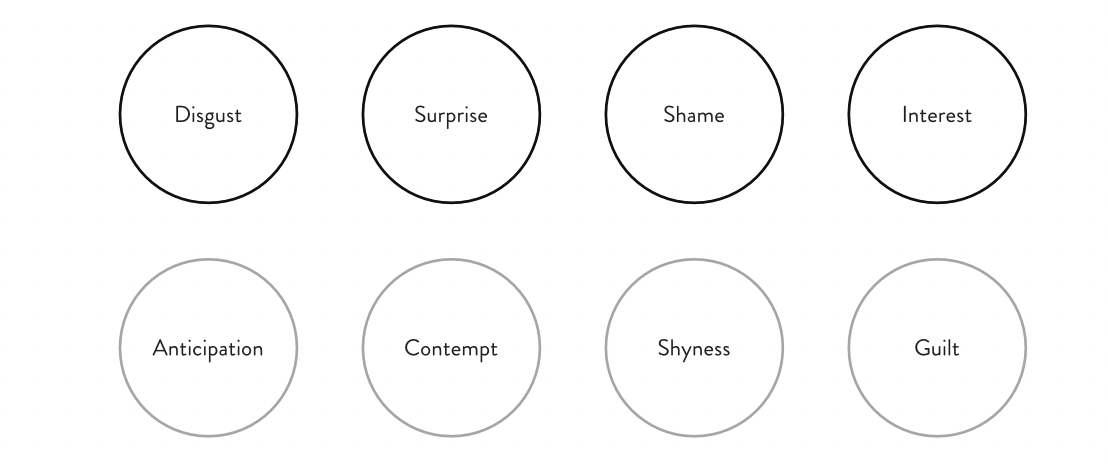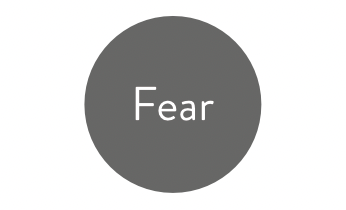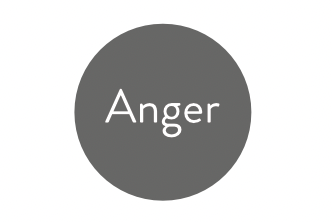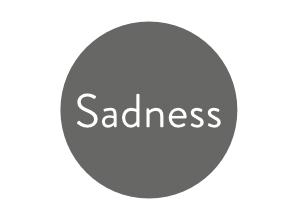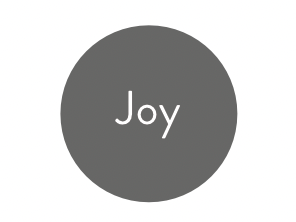Emotions
Biologically based response to information
Emotions are a hard-coded aspect of our bodies.
- Our assumptions of reasonable emotional expression are both cultural and individual
- Emotions exist even when there is no expression of them; they cannot be turned off
- Emotions are a product of neurotransmitters and certain mechanical structures of the brain. Neurotransmitters affect biology broadly and are, in turn, affected broadly by biology. Emotions can be sparked by reaction, thought, biology, environment.
- Which means that emotions are a complex system that we’ve rendered to simple nodes for communication, e.g., “I am angry.”
“Universally human” emotional states
There are many models for our core emotions out there.
They all agree on 4: Anger, fear, joy, sadness
Some models include 4, some 6, some 12, and a few in between.
There is still work being done in this area, and the core precepts for inclusion seem to be shifting:
- Some models are focused on the emotions that can’t be broken down further
- Some models are focused on facial expressions that remain the same cross-culturally
- Some models require both
- Some models ignore culture and miss the encultured expressions
The key emotional states
Core emotions, strongly felt, can short-circuit thinking like nothing else.
They are used by some of us to leverage others into agreement.
Where groups of us agree is a powerful tool. We can do more together than in working alone.
Emotions are easy to feel, but not as easy to interpret. They can be the first mark that a situation requires attention, but not always be well defined as to what we’re reacting to.
Fear
Flight/Fight/Freeze reaction
Most likely to follow the calmest, least fearful person….like the one that says they’ve figured it out already.
And in an actual, real-time situation where fear is the reasonable response? Following who has already figured out a course is a survival tactic.
Anger
Arrow-straight, forceful goal attainment
Most likely to lash out against what sparked the anger, sometimes the messenger but can be the source of the message.
And in an actual, real-time situation where anger is a reasonable response? Usually that which sparked it is that which needs to be cleared up.
Sadness
Internal relitigation
Most likely to not do much until and unless clarity is found.
And in an actual, real-time situation where sadness is a reasonable response? Usually it’s the thing that changes a mind and changes a course of action.
It’s the urge to stop kicking puppies.
Joy
Expansiveness
Most likely to appreciate all the nuances to a degree where the moment is well remembered.
It creates a state where future options that seem to lead to similar situations spark desire. This is where we would like to be again.
reductionism
Anger. Psychology Today. https://www.psychologytoday.com/us/basics/anger
Blair RJR. Considering anger from a cognitive neuroscience perspective. Wiley Interdiscip Rev Cogn Sci. 2012 Jan;3(1):65-74. doi: 10.1002/wcs.154. Epub 2011 Oct 19. PMID: 22267973; PMCID: PMC3260787.
Garfinkel SN, Zorab E, Navaratnam N, Engels M, Mallorquí-Bagué N, Minati L, Dowell NG, Brosschot JF, Thayer JF, Critchley HD. Anger in brain and body: the neural and physiological perturbation of decision-making by emotion. Soc Cogn Affect Neurosci. 2016 Jan;11(1):150-8. doi: 10.1093/scan/nsv099. Epub 2015 Aug 7. PMID: 26253525; PMCID: PMC4692323.
The nature of anger. (2024, January 16). Harvard Health. https://www.health.harvard.edu/healthbeat/the-nature-of-anger
Wikipedia contributors. Anger. Wikipedia, The Free Encyclopedia. https://en.wikipedia.org/w/index.php?title=Anger&oldid=1287378727
...entire story genre...
it's horror :)
Wikipedia contributors. Mark Fisher. Wikipedia, The Free Encyclopedia. https://en.wikipedia.org/w/index.php?title=Mark_Fisher&oldid=1287546020
...fear...
Amygdala. (2023, April 12). Cleveland Clinic. https://my.clevelandclinic.org/health/body/24894-amygdala
Beckers, T., Hermans, D., Lange, I., Luyten, L., Scheveneels, S., & Vervliet, B. (2023). Understanding clinical fear and anxiety through the lens of human fear conditioning. Nature Reviews Psychology, 2(4), 233–245. https://doi.org/10.1038/s44159-023-00156-1
Menting, A. M. (2018, August 15). The chill of fear. Harvard.edu. https://magazine.hms.harvard.edu/articles/chill-fear
Northwestern Medicine. 5 things you never knew about fear. Northwestern Medicine. https://www.nm.org/healthbeat/healthy-tips/emotional-health/5-things-you-never-knew-about-fear
Pierre, J. (2020, July 15). How does fear influence risk assessment and decision-making? Psychology Today. https://www.psychologytoday.com/us/blog/psych-unseen/202007/how-does-fear-influence-risk-assessment-and-decision-making
Rosenberg, J. (2017, November 11). The effects of chronic fear on a person’s health. AJMC. https://www.ajmc.com/view/the-effects-of-chronic-fear-on-a-persons-health
Wikipedia contributors. Fear. Wikipedia, The Free Encyclopedia. https://en.wikipedia.org/w/index.php?title=Fear&oldid=1287271743
...joy...
Burke, J., & Dunne, P. J. (2023, March 1). Joy is good for your body and your mind – three ways to feel it more often. The Conversation. http://theconversation.com/joy-is-good-for-your-body-and-your-mind-three-ways-to-feel-it-more-often-198276
Collier, S. (2022, October 17). How can you find joy (or at least peace) during difficult times? Harvard Health. https://www.health.harvard.edu/blog/how-can-you-find-joy-or-at-least-peace-during-difficult-times-202210062826
Hendel, H. J. (2021, May 10). How to feel more joy every day. Psychology Today. https://www.psychologytoday.com/us/blog/emotion-as-information/202105/how-to-feel-more-joy-every-day
Krasko J, Intelisano S, Luhmann M. When Happiness is Both Joy and Purpose: The Complexity of the Pursuit of Happiness and Well-Being is Related to Actual Well-Being. J Happiness Stud. 2022;23(7):3233-3261. doi: 10.1007/s10902-022-00541-2. Epub 2022 Jun 10. PMID: 36221298; PMCID: PMC9546977.
Kringelbach ML, Berridge KC. The Neuroscience of Happiness and Pleasure. Soc Res (New York). 2010 Summer;77(2):659-678. PMID: 22068342; PMCID: PMC3008658.
Wikipedia contributors. Joy. Wikipedia, The Free Encyclopedia. https://en.wikipedia.org/w/index.php?title=Joy&oldid=1284712564
...MRI...
Di Tao Zonglin He Yuchen Lin Chang Liu Qian, T. (2021). Where does fear originate in the brain? A coordinate-based meta-analysis of explicit and implicit fear processing,. NeuroImage, 227(2021). https://doi.org/10.1016/j.neuroimage.2020.117686.
Greenwood, V. (2017, March 1). Can you tell someone’s emotional state from an MRI? Scientific American. https://www.scientificamerican.com/article/can-you-tell-someones-emotional-state-from-an-mri/
Lin, CS., Wu, CY., Wu, SY. et al. Brain activations associated with fearful experience show common and distinct patterns between younger and older adults in the hippocampus and the amygdala. Sci Rep 8, 5137 (2018). https://doi.org/10.1038/s41598-018-22805-9
Strickland, A. (2016, October 6). This is what emotions look like in your brain. CNN. https://www.cnn.com/2016/10/06/health/spontaneous-emotions-brain-scans/index.html
Zhou, F., Zhao, W., Qi, Z. et al. A distributed fMRI-based signature for the subjective experience of fear. Nat Commun 12, 6643 (2021). https://doi.org/10.1038/s41467-021-26977-3
...physiological effects...
Bhushan, B., & Asai, A. (2018). Psychophysiological and oculomotoric changes during emotion elicitation. International Journal of Psychology and Psychological Therapy, 18, 15–26. https://www.ijpsy.com/volumen18/num1/479/psychophysiological-and-oculomotoric-changes-EN.pdf
Jang, EH., Byun, S., Park, MS. et al. Reliability of Physiological Responses Induced by Basic Emotions: A Pilot Study. J Physiol Anthropol 38, 15 (2019). https://doi.org/10.1186/s40101-019-0209-y
Mohinuddin, M. (2017, August 22). Physical Changes during Emotion (External & Internal). Blogger. https://www.sweducarebd.com/2017/08/physical-changes-during-emotion.html
Neuroscience News. (2018, April 18). Physiological Reactions to Emotions are Not Uniform. Neuroscience News. https://neurosciencenews.com/physiology-emotion-8834/
Nummenmaa, L., Glerean, E., Hari, R., & Hietanen, J. K. (2014). Bodily maps of emotions. Proceedings of the National Academy of Sciences of the United States of America, 111(2), 646–651. https://doi.org/10.1073/pnas.1321664111
Tyng, C. M., Amin, H. U., Saad, M. N. M., & Malik, A. S. (2017). The influences of emotion on learning and memory. Frontiers in Psychology, 8, 1454. https://doi.org/10.3389/fpsyg.2017.01454
UWA. (2019, June 27). Science of emotion: The basics of emotional psychology. UWA Online. https://online.uwa.edu/news/emotional-psychology/
...sadness...
Dougherty, E. (2018, August 15). The depths of despair. Harvard.edu. https://magazine.hms.harvard.edu/articles/depths-despair
Fitzgerald, J. (2019, January 22). Depression vs. sadness: How to tell the difference. Medicalnewstoday.com; Medical News Today. https://www.medicalnewstoday.com/articles/314418
Fitzgerald, J. (2019, January 22). Depression vs. sadness: How to tell the difference. Medicalnewstoday.com; Medical News Today. https://www.medicalnewstoday.com/articles/314418
Wikipedia contributors. Sadness. Wikipedia, The Free Encyclopedia. https://en.wikipedia.org/w/index.php?title=Sadness&oldid=1284616223
...universal emotions models...
BBC News. (2014, February 3). All human behaviour can be reduced to “four basic emotions.” BBC. https://www.bbc.com/news/uk-scotland-glasgow-west-26019586
Beck, J. (2014, February 4). New research says there are only four emotions. Atlantic Monthly (Boston, Mass.: 1993). https://www.theatlantic.com/health/archive/2014/02/new-research-says-there-are-only-four-emotions/283560/
Burton, Neel M.A., M.D (June 24, 2024). What are basic emotions? Psychology Today. from https://www.psychologytoday.com/us/blog/hide-and-seek/201601/what-are-basic-emotions
Celeghin A, Diano M, Bagnis A, Viola M, Tamietto M. Basic Emotions in Human Neuroscience: Neuroimaging and Beyond. Front Psychol. 2017 Aug 24;8:1432. doi: 10.3389/fpsyg.2017.01432. PMID: 28883803; PMCID: PMC5573709.
Cherry, K. (2018, May 3). The 6 types of basic emotions and their effect on human behavior. Verywell Mind. https://www.verywellmind.com/an-overview-of-the-types-of-emotions-4163976
Coppini, S., Lucifora, C., Vicario, C. M., & Gangemi, A. (2023). Experiments on real-life emotions challenge Ekman’s model. Scientific Reports, 13(1), 9511. https://doi.org/10.1038/s41598-023-36201-5
Gu, S., Wang, F., Patel, N. P., Bourgeois, J. A., & Huang, J. H. (2019). A model for Basic Emotions using observations of behavior in Drosophila. Frontiers in Psychology, 10, 781. https://doi.org/10.3389/fpsyg.2019.00781
Guy-Evans, O. (2023, February 17). Primary and secondary emotions: Recognizing the difference. Simply Psychology. https://www.simplypsychology.org/primary-and-secondary-emotions.html
Huang, Y. (2024). A theory of emotion based on a universal model. Humanities & Social Sciences Communications, 11(1), 1–8. https://doi.org/10.1057/s41599-024-02869-x
Keltner D, Sauter D, Tracy J, Cowen A. Emotional Expression: Advances in Basic Emotion Theory. J Nonverbal Behav. 2019 Jun;43(2):133-160. doi: 10.1007/s10919-019-00293-3. Epub 2019 Feb 7. PMID: 31395997; PMCID: PMC6687086.
Martinez, A., & Du, S. (2012). A model of the perception of facial expressions of emotion by humans: Research overview and perspectives. Journal of Machine Learning Research: JMLR, 13, 1589–1608.
Seven emotions: Understanding the core feelings that shape human experience. (2025, January 17). Neurolaunch.com. https://neurolaunch.com/seven-emotions/
Šimić, G., Tkalčić, M., Vukić, V., Mulc, D., Španić, E., Šagud, M., Olucha-Bordonau, F. E., Vukšić, M., & R Hof, P. (2021). Understanding emotions: Origins and roles of the amygdala. Biomolecules, 11(6), 823. https://doi.org/10.3390/biom11060823
Snoek, L., Jack, R. E., Schyns, P. G., Garrod, O. G. B., Mittenbühler, M., Chen, C., Oosterwijk, S., & Scholte, H. S. (2023). Testing, explaining, and exploring models of facial expressions of emotions. Science Advances, 9(6), eabq8421. https://doi.org/10.1126/sciadv.abq8421
The ‘five basic emotions.’ (2023, December 1). Therapy Hub Online Counseling. https://www.therapyhub.eu/the-five-basic-emotions/
Wikipedia contributors. Emotion classification. Wikipedia, The Free Encyclopedia. https://en.wikipedia.org/w/index.php?title=Emotion_classification&oldid=1284912383
Zhan J, Ren J, Sun P, Fan J, Liu C, Luo J. The Neural Basis of Fear Promotes Anger and Sadness Counteracts Anger. Neural Plast. 2018 Jun 14;2018:3479059. doi: 10.1155/2018/3479059. PMID: 30013595; PMCID: PMC6022272.
Zhan, J., Ren, J., Fan, J., & Luo, J. (2015). Distinctive effects of fear and sadness induction on anger and aggressive behavior. Frontiers in Psychology, 6, 725. https://doi.org/10.3389/fpsyg.2015.00725
I'm including Mark Fisher because he used horror in a way very similar to my own.
I use it to break my brain away from preconceptions. We have put of pin of trust in so much information and interpretation, and embedded it in our information structures. We do it to get through information spaces faster, but if we're trying to troubleshoot something that isn't working like expected time over time, these "pinned" ideas are the next information structures to look at. Basically, there is something in our unspoken, unrecognized assumptions that are derailing the connection between information and reality.
Watch horror, get past the fear, and the ideas underpinning the fear are about our accepted conceptualizations of information structure: individual, cultural, societal, economic, etc. Horror is predicated on cognitive dissonance. Something is not right. Something is not jiving between experience and preconception.
Horror can become a mental model for shifting your lens — your point of perception —around the same information in order to come to a new interpretation based on a fuller set of data. In most horror stories, you have to accept that something you wish weren't real is still affecting your experience.
...MRI...
I can't actually find the single article that made me really trust and believe this. I remember where I was when I read it, how it made me feel, that I immediately started editing multiple spots because it balanced a whole bunch of ideas. I'm pretty sure it was in early 2023, when I was starting to feel better from lead poisoning. "Pretty sure" is because 'feeling better' came in fits and starts.
But I can't find a download, I can't find a link, and I can't backtrace it with our current search engines. This part has to be taken with a grain of salt.
